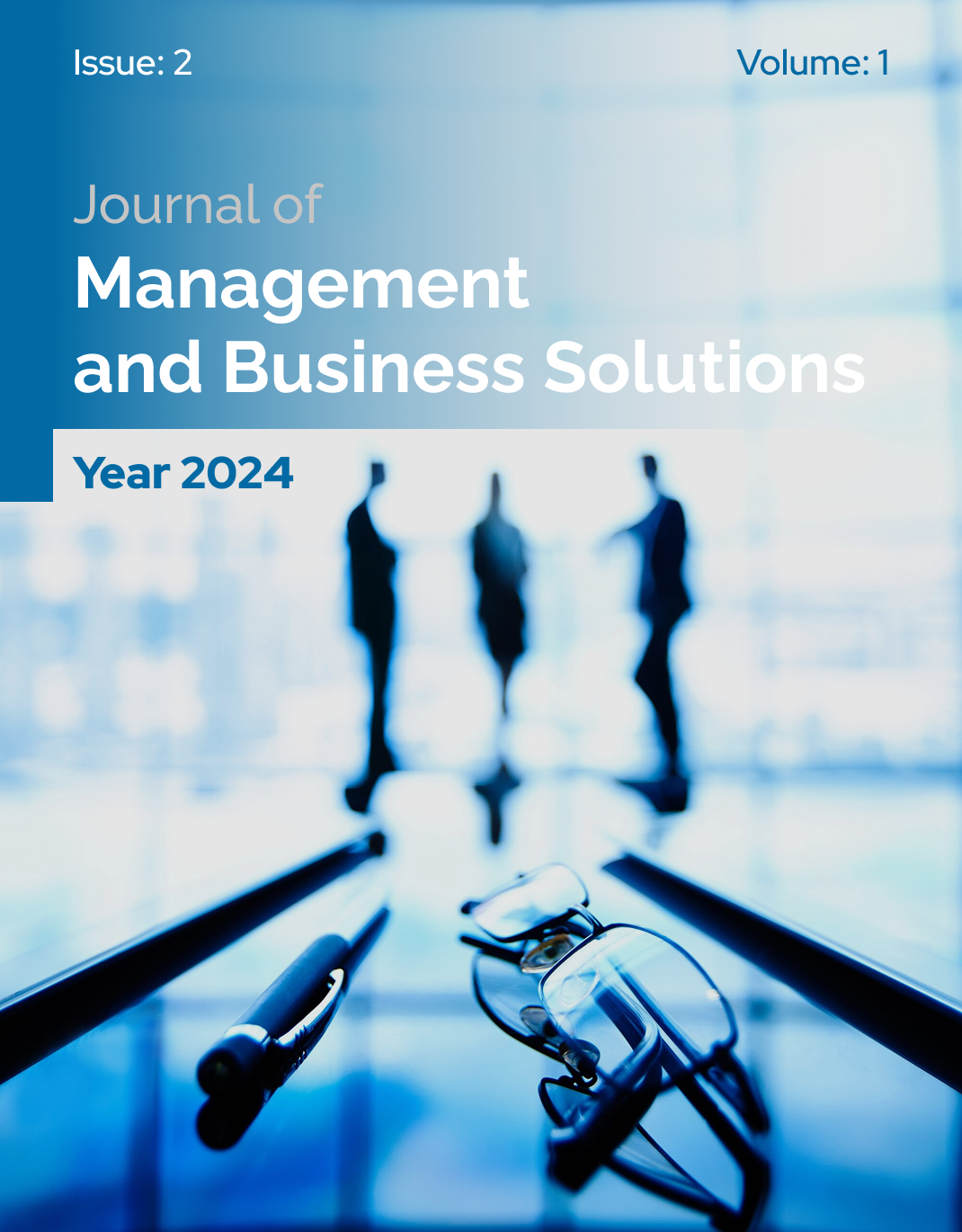Investigating the Role of Employee Engagement in Organizational Effectiveness: A Study of Employee-Led Initiatives
Keywords:
employee engagement, organizational effectiveness, employee-led initiatives, proactive behavior, qualitative research, Tehran, organizational culture, psychological safetyAbstract
This study aimed to explore how employee engagement influences organizational effectiveness through the lens of employee-led initiatives in Tehran-based organizations. A qualitative research design was adopted to gain in-depth insights into the experiences and perceptions of employees actively engaged in self-initiated workplace improvements. Data were collected through semi-structured interviews with 20 participants from diverse organizational backgrounds in Tehran. The participants were purposively selected based on their involvement in bottom-up initiatives that aimed to enhance organizational processes, culture, or outcomes. Interviews continued until theoretical saturation was achieved. All interviews were transcribed verbatim and analyzed thematically using NVivo software, following Braun and Clarke’s six-phase approach to thematic analysis. Strategies such as member checking and peer debriefing were employed to enhance trustworthiness. Analysis revealed three overarching themes: drivers of employee engagement, the nature of employee-led initiatives, and the outcomes of engagement. Engagement was primarily driven by intrinsic motivation, supportive organizational culture, recognition, and empowering leadership. Initiatives were characterized by autonomy, collaboration, and responsiveness to organizational gaps, but were also constrained by barriers such as bureaucracy and limited resources. Outcomes of these initiatives included enhanced organizational learning, improved performance, higher employee morale, increased retention, and stronger organizational reputation. The findings underscore that employee engagement is both a driver and consequence of organizational effectiveness. The study highlights the transformative role of employee engagement when expressed through self-initiated actions that align with organizational goals. Fostering a culture that supports psychological safety, autonomy, and recognition can significantly enhance engagement and, in turn, organizational performance. Organizations should reposition engagement as a dynamic, employee-driven process central to sustained innovation and effectiveness.
Downloads
References
Bakker, A. B., & Xanthopoulou, D. (2009). The crossover of daily work engagement: Test of an actor–partner interdependence model. Journal of Applied Psychology, 94(6), 1562–1571. https://doi.org/10.1037/a0017525
Bakker, A. B., Demerouti, E., & Sanz-Vergel, A. I. (2012). Burnout and work engagement: The JD–R approach. Annual Review of Organizational Psychology and Organizational Behavior, 1, 389–411. https://doi.org/10.1146/annurev-orgpsych-031413-091235
Christian, M. S., Garza, A. S., & Slaughter, J. E. (2011). Work engagement: A quantitative review and test of its relations with task and contextual performance. Personnel Psychology, 64(1), 89–136. https://doi.org/10.1111/j.1744-6570.2010.01203.x
Creswell, J. W., & Poth, C. N. (2017). Qualitative inquiry and research design: Choosing among five approaches (4th ed.). SAGE Publications.
Crant, J. M. (2000). Proactive behavior in organizations. Journal of Management, 26(3), 435–462. https://doi.org/10.1016/S0149-2063(00)00044-1
Detert, J. R., & Burris, E. R. (2007). Leadership behavior and employee voice: Is the door really open? Academy of Management Journal, 50(4), 869–884. https://doi.org/10.5465/amj.2007.26279183
Detert, J. R., & Treviño, L. K. (2010). Speaking up to higher-ups: How supervisors and skip-level leaders influence employee voice. Organization Science, 21(1), 249–270. https://doi.org/10.1287/orsc.1090.0465
Edmondson, A. (1999). Psychological safety and learning behavior in work teams. Administrative Science Quarterly, 44(2), 350–383. https://doi.org/10.2307/2666999
Grant, A. M., & Ashford, S. J. (2008). The dynamics of proactivity at work. Research in Organizational Behavior, 28, 3–34. https://doi.org/10.1016/j.riob.2008.04.002
Harter, J. K., Schmidt, F. L., & Hayes, T. L. (2002). Business-unit-level relationship between employee satisfaction, employee engagement, and business outcomes: A meta-analysis. Journal of Applied Psychology, 87(2), 268–279. https://doi.org/10.1037/0021-9010.87.2.268
Kahn, W. A. (1990). Psychological conditions of personal engagement and disengagement at work. Academy of Management Journal, 33(4), 692–724. https://doi.org/10.5465/256287
Parker, S. K., & Collins, C. G. (2010). Taking stock: Integrating and differentiating multiple proactive behaviors. Journal of Management, 36(3), 633–662. https://doi.org/10.1177/0149206308321554
Rich, B. L., Lepine, J. A., & Crawford, E. R. (2010). Job engagement: Antecedents and effects on job performance. Academy of Management Journal, 53(3), 617–635. https://doi.org/10.5465/amj.2010.51468988
Saks, A. M. (2006). Antecedents and consequences of employee engagement. Journal of Managerial Psychology, 21(7), 600–619. https://doi.org/10.1108/02683940610690169
Saks, A. M., & Gruman, J. A. (2014). What do we really know about employee engagement? Human Resource Development Quarterly, 25(2), 155–182. https://doi.org/10.1002/hrdq.21187
Schaufeli, W. B., Salanova, M., González-Romá, V., & Bakker, A. B. (2002). The measurement of engagement and burnout: A two sample confirmatory factor analytic approach. Journal of Happiness Studies, 3(1), 71–92. https://doi.org/10.1023/A:1015630930326
Spreitzer, G. M. (1995). Psychological empowerment in the workplace: Dimensions, measurement, and validation. Academy of Management Journal, 38(5), 1442–1465. https://doi.org/10.5465/256865
Tuckey, M. R., Bakker, A. B., & Dollard, M. F. (2012). Empowering leaders optimize working conditions for engagement: A multilevel study. Journal of Occupational Health Psychology, 17(1), 15–27. https://doi.org/10.1037/a0025942
Downloads
Published
Submitted
Revised
Accepted
Issue
Section
License

This work is licensed under a Creative Commons Attribution-NonCommercial 4.0 International License.




